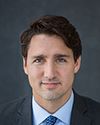I'm not a specialist on that theme. My curator is in a better position than I am to talk about it because he is preparing an exhibition on the subject.
At the time of the events, Canadian railway troops worked hard to dig underground railways in Europe and to repair the railway lines that were being dismantled with whatever resources they could find. That was highly characteristic of the railway workers who had acquired experience in Canada. At the time, development in the Rockies and across the north often required them to find ways of doing things and certain tools in order to innovate and be able to make repairs quickly. The Canadian railway troops did that job, which helped win the battle of Vimy Ridge, among others.
When I get back, I will ask my curator to give me some details on his research, which I will forward to you. The railway component is one of the main reasons why the allies paid great tribute to Canadian troops.




